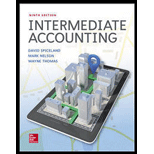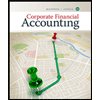
Concept explainers
Physical quantities and costs included in inventory
• LO8–2
The Phoenix Corporation’s fiscal year ends on December 31. Phoenix determines inventory quantity by a physical count of inventory on hand at the close of business on December 31. The company’s controller has asked for your help in deciding if the following items should be included in the year-end inventory count.
1. Merchandise held on consignment for Trout Creek Clothing.
2. Goods shipped f.o.b. destination on December 28 that arrived at the customer’s location on January 4.
3. Goods purchased from a vendor shipped f.o.b. shipping point on December 26 that arrived on January 3.
4. Goods shipped f.o.b. shipping point on December 28 that arrived at the customer’s location on January 5.
5. Phoenix had merchandise on consignment at Lisa’s Markets, Inc.
6. Goods purchased from a vendor shipped f.o.b. destination on December 27 that arrived on January 3.
7. Freight charges on goods purchased in 3.
Required:
Determine if each of the items above should be included or excluded from the company’s year-end inventory.
Trending nowThis is a popular solution!

Chapter 8 Solutions
INTERMEDIATE ACCOUNTING (LL) W/CONNECT
- Marion Products Ltd manufactures a single product and follows a JIT policy where ending inventory must equal 20% of the next month's sales. It estimates that July’s ending inventory will consist of 40,000 units. August and September sales are estimated to be 250,000 and 265,000 units, respectively. Marion assigns variable overhead at a rate of $4.10 per unit of production. Fixed overhead equals $390,000 per month. Compute the number of units to be produced and the total budgeted overhead that would appear on the factory overhead budget for the month of August.arrow_forwardI am looking for the correct answer to this general accounting problem using valid accounting standards.arrow_forwardCan you help me solve this general accounting question using the correct accounting procedures?arrow_forward
- I need help solving this financial accounting question with the proper methodology.arrow_forwardCan you provide the valid approach to solving this financial accounting question with suitable standards?arrow_forwardI need help finding the accurate solution to this general accounting problem with valid methods.arrow_forward
 Cornerstones of Financial AccountingAccountingISBN:9781337690881Author:Jay Rich, Jeff JonesPublisher:Cengage Learning
Cornerstones of Financial AccountingAccountingISBN:9781337690881Author:Jay Rich, Jeff JonesPublisher:Cengage Learning College Accounting, Chapters 1-27AccountingISBN:9781337794756Author:HEINTZ, James A.Publisher:Cengage Learning,
College Accounting, Chapters 1-27AccountingISBN:9781337794756Author:HEINTZ, James A.Publisher:Cengage Learning, Financial And Managerial AccountingAccountingISBN:9781337902663Author:WARREN, Carl S.Publisher:Cengage Learning,
Financial And Managerial AccountingAccountingISBN:9781337902663Author:WARREN, Carl S.Publisher:Cengage Learning,- Principles of Accounting Volume 1AccountingISBN:9781947172685Author:OpenStaxPublisher:OpenStax College
 Corporate Financial AccountingAccountingISBN:9781305653535Author:Carl Warren, James M. Reeve, Jonathan DuchacPublisher:Cengage Learning
Corporate Financial AccountingAccountingISBN:9781305653535Author:Carl Warren, James M. Reeve, Jonathan DuchacPublisher:Cengage Learning Corporate Financial AccountingAccountingISBN:9781337398169Author:Carl Warren, Jeff JonesPublisher:Cengage Learning
Corporate Financial AccountingAccountingISBN:9781337398169Author:Carl Warren, Jeff JonesPublisher:Cengage Learning





